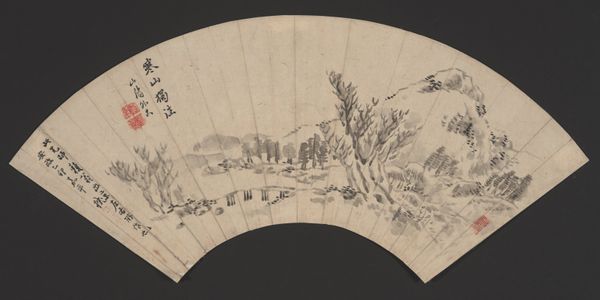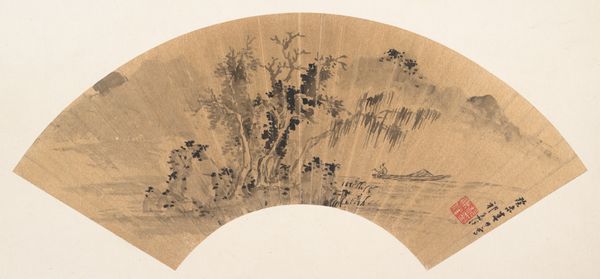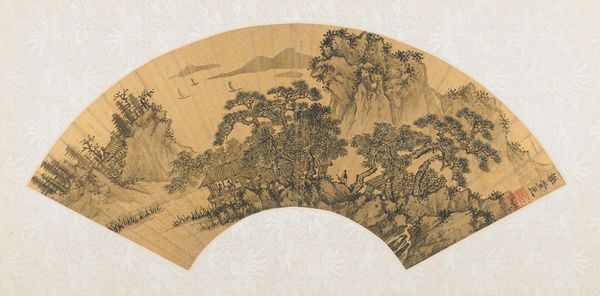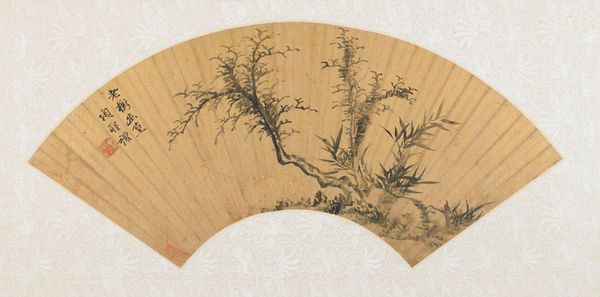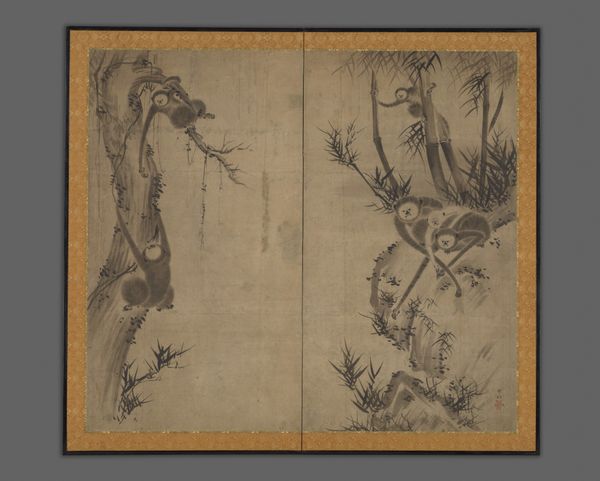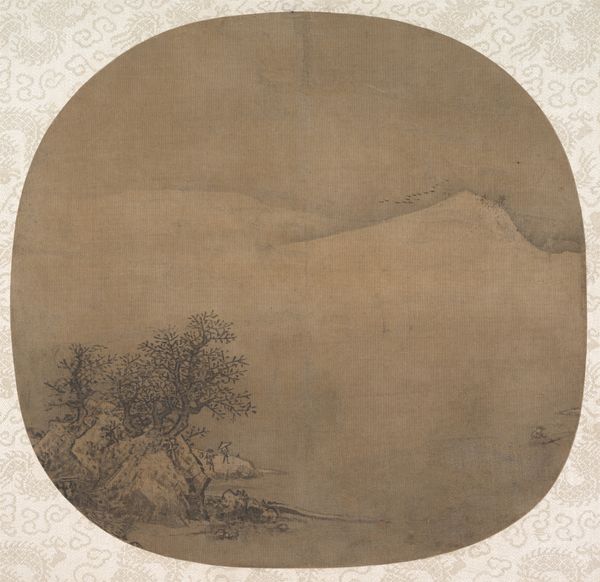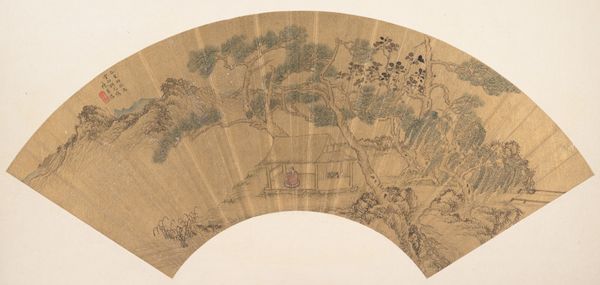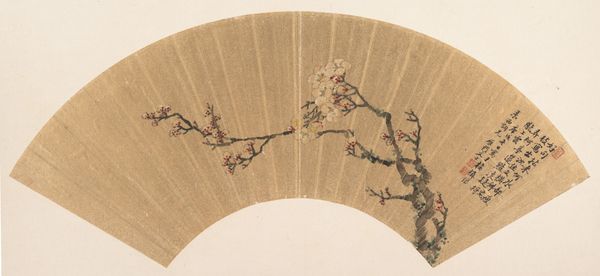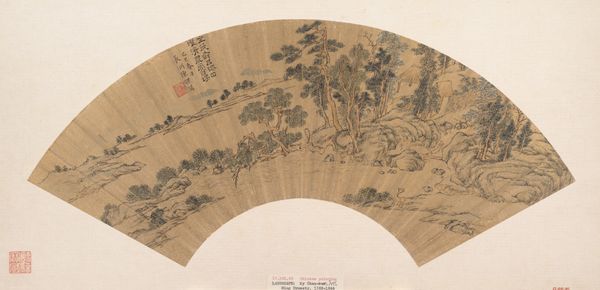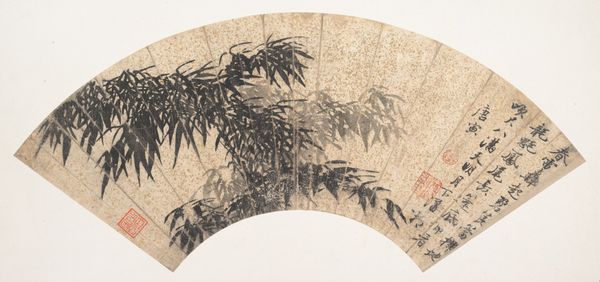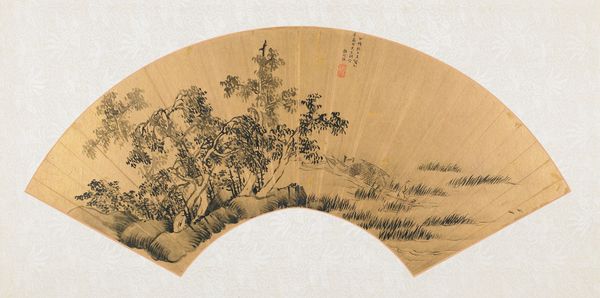
drawing, paper, ink-on-paper, ink
#
drawing
#
water colours
#
asian-art
#
landscape
#
paper
#
ink-on-paper
#
ink
#
orientalism
Dimensions: 8 1/4 × 19 1/2 in. (20.96 × 49.53 cm) (sheet, fan)12 1/2 × 22 in. (31.75 × 55.88 cm) (mount)
Copyright: Public Domain
Yamamoto Baiitsu made this landscape in the manner of Ni Zan with ink on paper in 19th century Japan. The painting is a copy of the style of Ni Zan, a famous Yuan Dynasty painter, who lived from 1301 to 1374. Baiitsu likely had access to printed painting manuals. He was part of an artistic and intellectual movement that looked to China for inspiration. Baiitsu was an eclectic artist working in the nanga tradition which was a Westernized interpretation of Chinese art. The Japanese literati valued familiarity with Chinese aesthetics and culture, and Baiitsu was a versatile artist who worked in a range of styles. Baiitsu also studied with Chinese artists who lived in Nagasaki. To understand the painting more fully, art historians look to biographical information about the artist, the circulation of painting manuals, and the trade networks that brought Chinese art to Japan. Appreciating a painting like this means understanding its place in a complex web of social and institutional relations.
Comments
minneapolisinstituteofart almost 2 years ago
⋮
Copying old paintings and emulating ancient masters is a practice seen frequently in works by Japanese literati painters. One of the leading painters of his day, Yamamoto Baiitsu turned for inspiration to Ni Zan, a Chinese painter who lived 500 years earlier. Ni Zan was known for his distinctively sparse landscapes, which he created using sketchy brushwork and a relatively dry brush. His compositions often feature a foreground of lanky trees separated from far-distant mountains by a wide expanse of undefined water. Baiitsu skillfully adapted Ni Zan’s compositional formula to the folding-fan format by placing the foreground slightly left of center and then creating two separate mountain vistas, one at far left and the other at right.
Join the conversation
Join millions of artists and users on Artera today and experience the ultimate creative platform.
